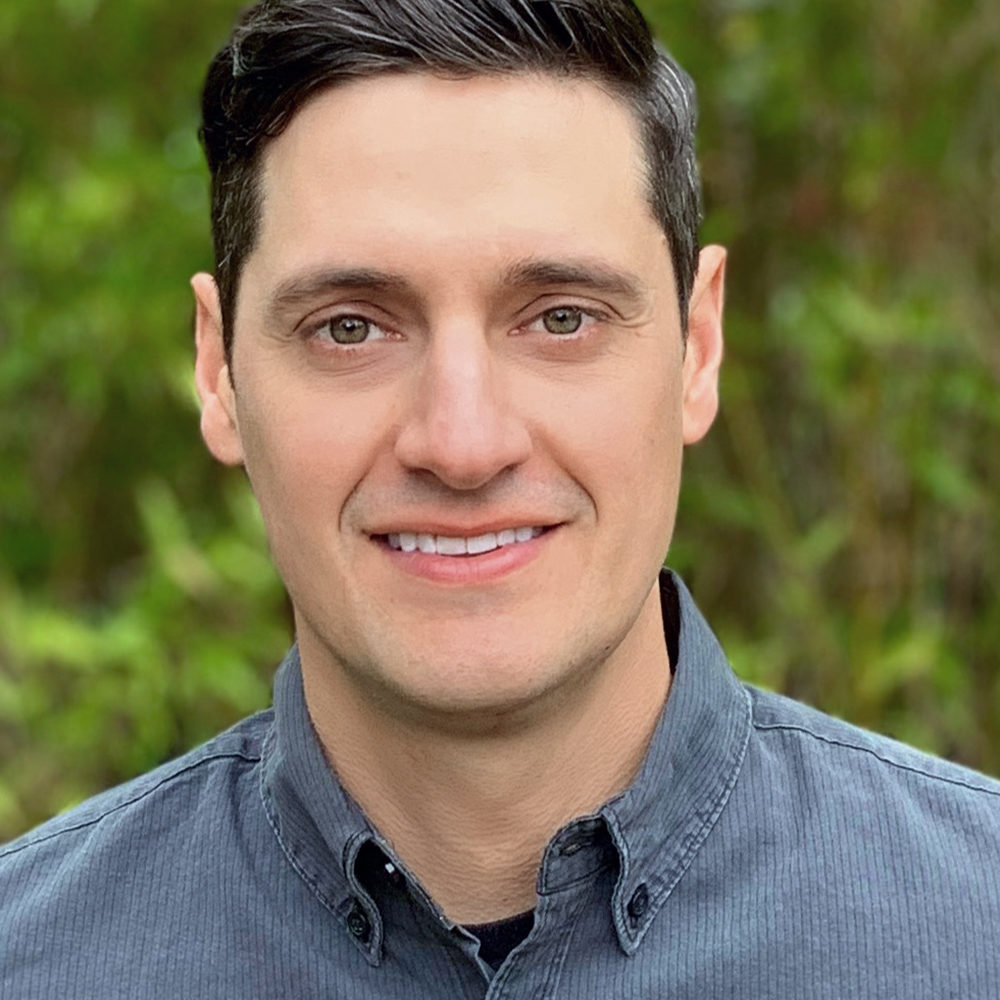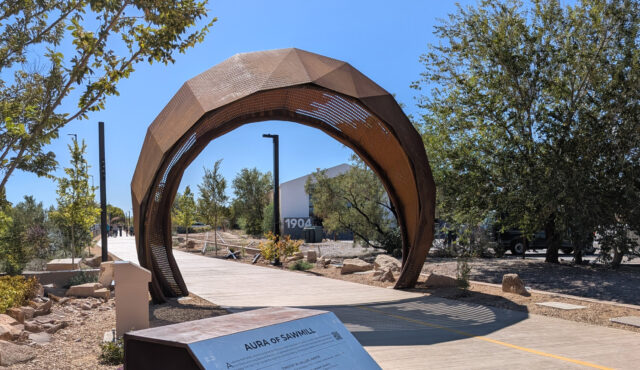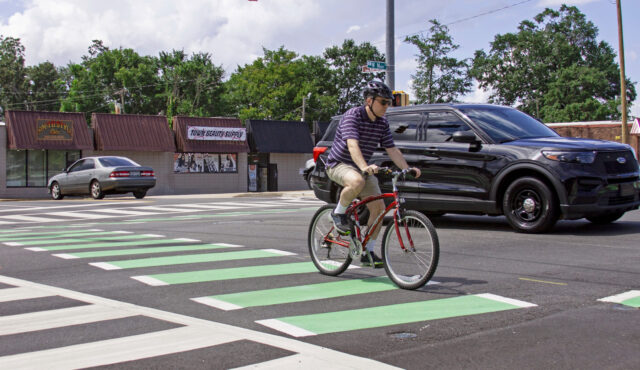Talk to Dustin DeKoekkoek for five minutes and you will wish he were your boss. From office bike rides to team lunches to off-the-cuff conversations, he makes a point to listen to the Seattle team and get to know them. Dustin has a knack for transforming a collection of parts into a community, both as an engineer and as an office director.
In 2021, Dustin joined an already stellar Seattle team led by Amalia Leighton Cody. Just one year later, in November 2022, Amalia stepped into her new role as Director of Engineering, Western U.S., and Dustin was promoted to Seattle Office Director.
A compassionate leader who walks the walk, Dustin is cultivating a team culture where every person can align their passions with their projects. Read the interview below to learn more about Dustin — and why he can’t imagine himself doing anything else.
When did you decide to become a civil engineer?
I knew I wanted to do something math-related that had a practical impact, but I wasn’t sure exactly what. After my first year of college, I spent time in Tanzania and Kenya and did a lot of traveling around East Africa. I hadn’t previously done much traveling, and it opened my eyes to see how people were getting around with varying levels of infrastructure and often without a vehicle. That experience also got me interested in water infrastructure and access. Those few months really pushed me toward civil engineering.
How did you find your way to transportation engineering?
I started out working for a consulting firm that designed residential subdivisions. When the 2008 market crash happened and that work dried up, I shifted to a company that specialized in underground utilities. For six years, I did stormwater management design and design work for sewer and water systems and large-scale irrigation systems, with a little bit of transportation mixed in.
Meanwhile, I started getting more and more interested in urbanism. I love thinking about how we move and interact with each other, and how transportation engineering relates to land use and housing and all the topics that make up how cities are built and how they operate. I knew I wanted to help people connect with each other and contribute to something greater than myself.
Why Toole Design?
It’s important to me that the work I’m doing is a net positive for the world. At another firm, I might work on some similar projects to what we do here, but I’d also have to work on expanding highways and high-speed suburban arterials, and I don’t think that’s where we should be putting our resources. Highway and arterial work should be focused on making them safer and expanding active transportation opportunities for people of all ages and abilities.
I grew up a middle-class, white male with not a lot of lived experience to draw upon to see different perspectives and empathize. Now I have two daughters, one of whom has a disability, and that has introduced me to the disability advocacy community. It has furthered my desire to align my personal interests and passions with what I do professionally. Ethics, empathy, and equity are at the core of my values, and they are the lens through which we view our work at Toole Design. So Toole Design was a perfect fit for me. After working here for a year, I’m even more convinced that’s the case.
What do you love about being Seattle Office Director?
My favorite part is working to align the type of work we pursue with the interests and goals of our individual staff members. Our work is only as strong as the people we have in our office, and it’s my responsibility to make sure they’re happy with what they’re doing. I want my staff to find the same level of personal fulfillment that I’ve found. And I want them to feel like they’re part of something bigger and making a positive impact.
I want my staff to find the same level of personal fulfillment that I’ve found.
Our staff appreciates the flexibility of hybrid work, but we also really enjoy spending time with each other face to face, whether that’s collaborating during the workday or going on bike rides or art walks after hours. We put a high priority on work-life balance, chipping in as needed to support each other. I’m proud to share the news that Toole Design has been named Employer of the Year by WTS Puget Sound/Seattle.
What are the greatest strengths of the Seattle team?
We can follow a project through its entire life span, from helping our clients define it, to designing it, to seeing it constructed. We work across disciplines, with planners supporting our design projects, engineers supporting our planning projects, and a team of talented urban designers and landscape architects involved throughout the process. And of course our office of 20 is backed by a company of almost 300 people, who are experts in active transportation planning and design and in developing standards at the federal and state levels.
The Seattle team has developed relationships with lots of different communities across region, and we take a lot of time to understand each community. We want to know: what are the hot topics? council priorities? staffing challenges? Then we can tailor our services and how we deliver them for that specific agency. Our staff’s flexibility to operate in and for different sizes and types of clients is definitely a strength of the team.
Many people in our office are also advocates in their neighborhood or community. From volunteering and advocacy, this team has a perspective beyond that of the professional consultant. They care deeply about their places and spend time trying to make them better.
What project are you excited about right now?
I’m excited about our work for the City of Seattle on the Pike and Pine Streetscape and Bicycle Improvements project. Construction is about to begin, and it’s going to really improve bicycle and pedestrian connections in one of the most vibrant parts of the city — from Seattle’s waterfront, through the downtown core, and up through Capitol Hill. We led the final design, and almost everyone in the Seattle office touched the project in some way. Plus it’s right down the street, just a few blocks from our office, so most of our staff travel through there on a regular basis.
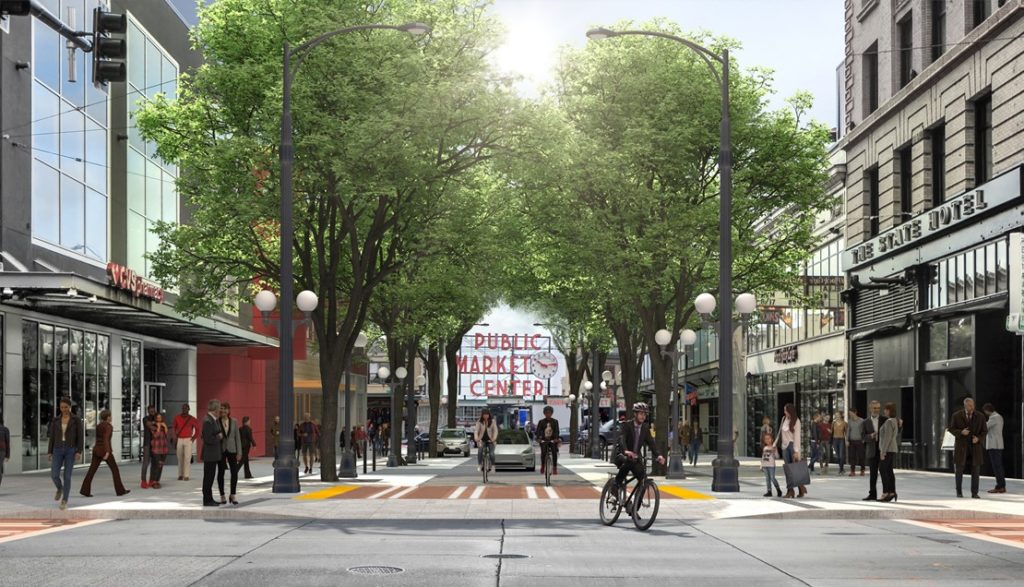
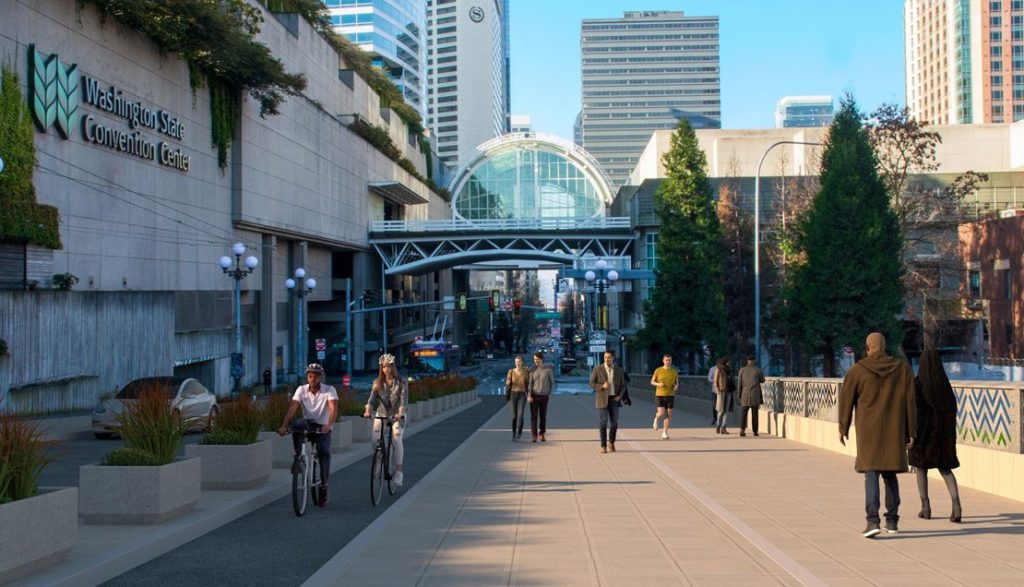
I’m also proud of our work on the Tacoma Vision Zero Action Plan, which recently won the ITE Washington Chapter Planning Project of the Year award. Beyond the Plan itself, we conducted a speed and safety study and developed a turnkey Vision Zero dashboard that allows City staff and the public to track progress toward reducing serious and fatal crashes.
What is your favorite way to get around?
Usually the bike + bus combo. I live about 15 miles from the office. On nice days when I have time, I love to bike the whole way on the Burke-Gilman Trail. I often take my bike on the bus or light rail to extend a trip or speed it up if I don’t have as much time. I also love walking. Our team does a lot of work within close proximity to our office, so we can get to a lot of projects without a car.
What would you be doing if you weren’t doing this job?
It’s really hard to imagine not doing this. I suppose I would still be the squeaky wheel trying to get communities to improve active transportation opportunities. Some friends and I started a community foundation in Mountlake Terrace that ran a small grant program for community improvements, and I ran that for a few years. We helped raise and distribute money for things like benches, bike racks, and little libraries; organized concerts in the park; and administered Covid relief funds. So even if I weren’t doing this job, I would still be doing something with the goal of empowering people to make positive changes in their neighborhoods and communities.
Want to work with Dustin? Apply to be our Engineering Group Manager in Seattle.
